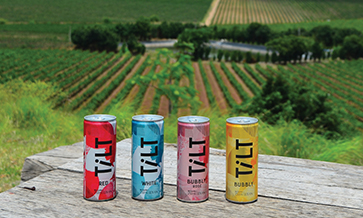Perhaps the best gift that the countries of India and Australia could give each other for the New Year is the Economic Cooperation and Trade Agreement (ECTA), which will be implemented from December 29, 2022.
The ECTA’s two tariff cuts in quick succession intensify the upfront benefits of this agreement for Australian exporters. As part of the deal, Australia has agreed to eliminate customs duty immediately on 98.3% of the traded goods and 100% tariff lines over 5 years.
Labour-intensive sectors in India that will benefit from the elimination of the 5% customs duty include textiles and apparel, agricultural products, leather, furniture, jewellery and pharmaceuticals.
India imports more wine from Australia, the seventh-largest wine-producing country in the world, than from any other country. However, the current 150% federal tariff on wine, combined with state taxes in India, makes Australian wine up to 10 times more expensive for Indian consumers.
Tariff cuts
On entry into force of the ECTA, wines that arrive in the market priced at US$ 15 per bottle or more will see the 150% tariff immediately reduced to 75%. Gradual tariff reductions will then kick in, with a final tariff rate of 25% after 10 years.
Mid-range Australian wines also benefit – wine priced between US$ 5-15 will see tariffs fall to 100% immediately and then gradually down to 50% after 10 years.
There will, however, be no change to the tariff for entry-level Australian wines and the economy range of wines priced less or equivalent to US$ 5.
“The tariff reduction will give mid-range and premium Australian wines a competitive edge over wines from Europe, South America and South Africa,” says Anmol Chandhok, Vice-President of Chenab Impex, one of the largest wine importers and distributors of Australian wines in India.
“We don’t think there will be an immediate reduction in maximum retail price (MRP), since the registration process with the excise department takes some time,” Anmol says. “However, within a few months there will be a price reduction of 15-20% in the MRP for mid-range, and around 30% for premium wines, assuming all other costs remain the same.”

- The CIF value of wines listed in this part shall be indexed every 10 years following entry into the force of the agreement.
- The indexation shall be based on India’s wholesale price index (WPI) for wine, taking the year of EIF of the agreement as the base year.
- The parties shall confirm the amendment to the CIF value of the wine 6 months prior to the introduction of such an amendment.
Market share
Australia has a privileged position as the largest exporter of wines to India with a 44% share of the Indian imported wine market (US$ 12 million in 2021). It produces great value-for-money wines; but also premium quality wines – which will become more accessible to Indian consumers as a result of the trade agreement.
However, wines and brands from Australia currently available in India are limited, considering what is on offer. There are a number of factors that have meant that the number of individual Australian wine brands is smaller than other countries, including awareness of the extent of Australia’s wine offering.
Austrade, the Australian Trade and Investment Commission, is confident that these issues will be addressed in the immediate future. “Australian wine provides a perfect match for lovers of traditional styles of wine and those seeking new and innovative expressions. We’re delighted that Indian wine consumers are discovering the breadth and diversity of Australian wines,” says John Southwell, Trade and Investment Commissioner at Austrade.
Labels & varietals
Australia has one of the most diverse wine scenes in the world. With more than 100 grape varieties grown across 65 distinctive wine regions, Australian wine is an expression of the country’s unique climates and soils, and the passionate communities that cultivate them.
This diversity means that wine drinkers in India can find something produced by skilled, creative winemakers that suit their tastes, whatever their tastes are. From sophisticated reds, to fun, fruity whites, wine to impress or something casual for the weekend, discerning Indian consumers can find their perfect match in the wines crafted by Australia’s innovative winemakers.
There is a world of grape varieties to explore from Australia, but two varieties grown in most of its wine regions, and which are easily accessed by consumers in India, are Shiraz and Chardonnay.
These two varieties are produced in a range of styles that reflect the places they are grown in and the people who make them – from light and crisp to oaky and full of flavour.
Promotion plans
John Southwell is quite excited about the opening up of the Indian markets to products from Australia. “We have a great story to tell and our wines – some of which are made from some of the oldest vines in the world – are known internationally for innovative styles and personalities, flavour profiles, varietal and regional diversity,” he says.
“We’re working on strategies to tell that story and enhance consumer and HoReCa awareness of the depth and sheer diversity in Australian premium wines for the ultimate benefit of the Indian consumer,” he adds.
Sunil Chawla, the Trade, Marketing and E-Commerce Manager with Brindco Sales, another large importer and distributor of Australian wines, which currently imports 55 labels from different regions says, “Australian premium wines are comparable to premium wines from any other country. To fulfill consumer demands we will add more labels in our Australian portfolio”.















